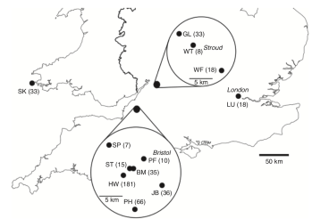 This project initiates a new collaboration between biology and applied mathematics to apply network analysis methods to a large and unique data set of immune measures of wild mice populations.
This project initiates a new collaboration between biology and applied mathematics to apply network analysis methods to a large and unique data set of immune measures of wild mice populations.
Our aim is to understand the network relationship among the immune measures and to compare it between wild and lab mice.
Immune systems of animals – wild versus lab
Animals make immune responses to protect them from harmful infections, and in this way immune responses contribute to animals’ evolutionary fitness. Almost everything we know about mammalian immune responses has come from studies of laboratory animals. However, recent work has shown that wild mice immuno-regulate their responses differently than laboratory mice. How this is done is unknown.
Key questions
- What are the network relationships among these immune measures?
- How do the network properties differ between wild mice and lab mice?

A data set of immune function in wild mice in Bristol area
In our previous study, we assembled a data set of 131 immune response measures of 450 wild mice from the local area.
Network of immune measures
We constructed networks of the 131 immune responses, where a node is an immune measure and edges are formed when two immune measures are similar across mice.
This process was done for wild mice and lab mice separately. Then we carried out two types of analyses:
- Detection of network communities to know how nodes can be grouped into blocks.
- Centrality, i.e. the importance of each node in the network.
Community structure
We used two community detection algorithms: stochastic block model and modularity maximisation, to identify how the immune network can be divided into blocks of interrelated measures.
Centrality
To analyse the role of each immune measure, we calculated the degree and the eigenvector centrality measures.
Outcomes
- Similar structures are observed when community detection algorithms are used in different wild mice networks, showing robust results.
- Wild mice and lab mice networks show different community structure and different behaviours against network structure stress tests.
Plans for extension
We aim to study different network structures, such as core-periphery and different centrality measures, as well as how networks change among mice of different state (age, sex, etc.) and geographical location.
Blog written by Naoki Masuda, Engineering Maths at the University of Bristol
Acknowledgements: Mark Viney, School of Biological Sciences, Elohim Fonseca dos Reis, Engineering Maths
This project was funded by the Jean Golding Institute Seed Corn Funding Scheme 2018. To find out about other projects supported by this scheme, take a look at the Jean Golding Institute Projects.

